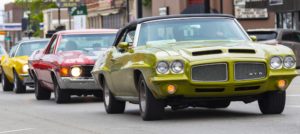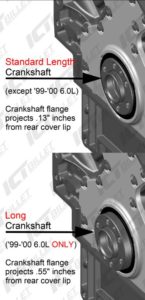TECH GUIDE: Choosing a GM Flywheel-What You Need To Know
Car building has experienced a wide variety of engine combinations and changes in design in the past few decades.
The choices between big blocks, small blocks, LS, LT… it can be a little overwhelming sometimes, but typically we know what we like and will go with what we know..
Regardless of which you choose, it’s important to know your engine set up and how it works with the wide variety of transmissions available today.
One of the biggest challenges is knowing your engine balance, to ensure the correct flywheel is bolted on the first time.
You may be thinking that this seems like a “no-brainer”, but you are not alone if you just aren’t 100% sure of what you’re working with.

The following information will help you choose the correct flywheel.
Should you need information on something not found below, there will likely be a little more research to be done
Feel free to call us 208-453-9800
In addition, engine balance there are three other important factors to consider.
- Crank flange bolt pattern/sealing arrangement
- Ring gear tooth count.
- Crankshaft register diameter
These are the critical elements to making sure you can properly attach your engine to your chosen transmission.

Each engine manufacturer has its own specific set-up.
So deciding which engine to use is the first step.
This is especially important because not everyone refers to things the same way.
Two engines might both be part of the “small block” family but are completely different when it comes to which flywheel they use.
You will want to gather as much possible information as you can before you set out on your parts-gathering journey so that you can find the right parts in one trip!
GM engines are used in a wide variety of builds not just Chevys.
The crank flange bolt patterns of Gen I (two-piece rear main seal),
Gen II (one-piece rear main seal), and Gen III, IV, V (LS style) are all different and will not permit any interchange between them.
These bolt patterns became successively smaller with each generation. Gen I and Gen II Chevy engines featured two available diameters of flywheels and two corresponding tooth counts of 153 and 168. Gen III, IV, V LS/LT series engines feature only the large diameter, 168 tooth flywheels, and flexplates, but carry either a 6, 8, or 9 bolt crank flanges.
Early GM(Chevrolet) Small Block Engines
- Built from 1955-1985.
- Displacements were 265ci. up to 400ci.
- 2-pc rear main seal design crankshaft with 6 bolt flange & register diameter of 2.485′.
- 153 tooth and 168 tooth ring gears- many of the factory bellhousings will only accept the 153-tooth size, typically the aftermarket bellhousings will accept both sizes.
In many cases, if you’re changing from one size to the other you will also need a new starter that is paired for that ring gear. - All had an internal or “0” balance EXCEPT 400 Small Block- which is externally balanced.
Late GM Small Block Engines
- Built from 1986-2003 for factory vehicles, still available through GM’s crate engine program.
- Displacements were limited to 305ci. or 350ci. (the L99 262c.i. was a rare exception)
- 1-pc rear main seal design crankshaft with 6 bolt flange & register diameter of 2.067″.
- 153 tooth and 168 tooth ring gears- many of the factory bellhousings will only accept the 153-tooth size, typically the aftermarket bellhousings will accept both sizes. In many cases, if you’re changing from one size to the other you will also need a new starter that is matched to that ring gear.
- Engines will be either internally or externally balanced with the external balance being most common.
The GM (Chevrolet) Big Blocks
- The early 454ci.the design used a 2-pc rear main seal and had its own specific balance.
- The later (after 1990 or Gen V) 454/502 ci. engines were all 1-pc rear main seal and externally balanced.
- All other big-block displacements used a 2-pc rear main seal, internal or “0” balance, and 168 tooth ring gear. They will accept the same flywheel as the early small-block engine with 2.485″ register diameter.
- All Big Blocks can use the 153 tooth flywheel when the engine block is drilled for starter type.
LS/LT series engines 1997-present (Gen 3, 4, & 5)
- All engines use a 168-tooth ring gear.
- All engines are internally balanced.
- Series LS1,2,3,6,7 have 6 bolt crank flange bolt patterns.
- The LSA, LSX (aftermarket), and the new LT1 & LT4 engines have 8 bolt crank flange patterns.
- The LS9 uses a special 9 bolt crank flange pattern
NOTES & EXCEPTIONS: Crankshafts for LT engines can be changed/swapped. It is important …Always know your crankshaft register diameter.
-
- Early 4.8L & 6.0L LS engines ( 1999-2000 ) have an extended crank flange that requires a specific flywheel.
- Early 4.8L & 6.0L LS engines ( 1999-2000 ) have an extended crank flange that requires a specific flywheel.
HOVER OVER IMAGE TO ENLARGE
Please log in to leave a comment.

No Comments Yet